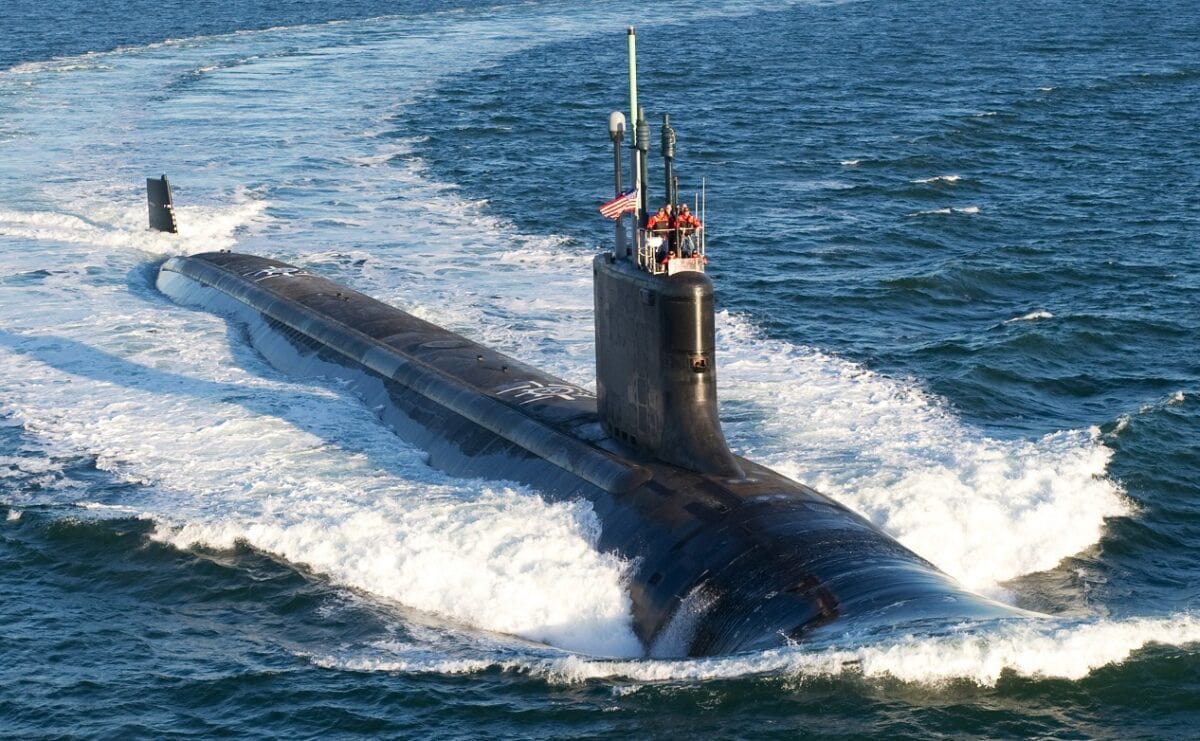A government watchdog agency has determined that the U.S. Navy’s new Virginia-class Block V fast attack submarines are behind schedule and over budget. The U.S. Government Accountability Office (GAO) said in a report that this malady has been created due to problems with human resources. It is due to an “overall higher workforce demand and additional factors such as correspondingly less experienced workers.” The GAO raised the question of whether the Navy will be able to proceed with its Block VI program if the labor shortage problems in the Block V program persist.
Much to Like in the Block V Virginia-Class
The Virginia Class Block V submarine has more room for weapons. These boats will have an additional 28 missile slots in an elongated section behind the sail. This will make the submarine longer but will increase the total number of Tomahawk-sized weapons to 65. This is more than the Seawolf-Class that has room for 50 Tomahawk cruise missiles.
Get Those Tomahawks Deployed
The Navy aims to build between 72 to 78 new attack submarines. Ten of these will be the Virginia Block V boats. The Block V will have more sensors and a new weapons module. An 84-foot-long extension will be built to provide for four new vertical launch tubes resulting in more Tomahawks. Each tube can deliver seven missiles. This addition is called the Virginia Payload Module.
Ship Killing Capability
The new Tomahawks on board, also known as the Block V batch, will be improved to add an anti-ship capability. This is an important upgrade since the Block V boats will have a role to play in the Indo-Pacific should a conflict with China arise. China has the biggest Navy in the world, so the U.S. Navy wants to bring as many anti-ship missiles to the fight as possible.
Where Are All the Workers?
GAO worries that these upgrades will be delayed and cost more than previously estimated. The GAO believes that the Navy chose to build the Columbia-class submarine while prioritizing the Block V upgrades at the same time. This has created a shortage of workers. Welders are in short supply and Electric Boat, a subsidiary of General Dynamics Corporation, has a program in which the firm is trying to hire more women to be welders.
Virginia-Class: Labor Shortage Is a Problem
Huntington Ingalls Industries Newport News Shipbuilding, the other major submarine builder, also does not have enough welders, electricians, riggers, and other shipyard workers. Both companies have communicated to the Navy that these labor shortages will continue to create a problem with submarine construction. The firms are worried that they may have to employ workers with less experience and fewer skills.
This Will Create Delays
As a result, the GAO has determined that the first three Block V Virginia-class subs will be delivered late. These delays will also create a situation in which more money will be spent than what was originally budgeted. The Navy had earlier determined it would fix its labor problems before 2022, but that is not the case.
What About Block VI Virginia-Class Submarine
This means the plans for a Block VI submarine upgrade will be affected. In 2020, the Navy thought that Block VI would be a “bridge” to a new class of attack submarines – the next-generation SSN(X) program. Block VI boats are planned to be quieter than the Block V. Block VI was supposed to begin upgrades for delivery between FY24 and FY28. Those dates do not appear attainable with the delays and costs incurred from the Block V labor shortage issue.
Get the Word Out that Shipbuilding Is a Rewarding Career
The Navy in the past has depended on industry to recruit new workers for shipyards. The service branch is now re-evaluating that practice and is brainstorming ways to attract more workers to its submarine-building yards. One way to alleviate this problem is to focus on the relatively high compensation that these jobs pay and spread the word that the employment would be a great fit for women. The Navy will also start informing high school and community college students that working in shipbuilding can be both financially rewarding and personally fulfilling since workers will be serving their country in a defense role.
Usually, delays and cost overruns are the result of human error that includes poor planning and subpar execution. Supply chain issues can also lead to delays and budget problems. Now it is more of a human resources problem. To keep up with China’s naval shipbuilders, the Navy must ensure that it can recruit high-quality workers who wish to make shipbuilding their long-term career. Without a proper industrial base, getting the best submarines in the world to warfighters will not be possible.

The Virginia-class attack submarine Minnesota (SSN 783) is under construction at Huntington Ingalls Newport News Shipbuilding. (U.S. Navy photo courtesy of Newport News Shipbuilding/Released)

US Navy Virginia-class Submarine Under Construction.

US Navy Virginia-class Submarine Under Construction.

The Virginia-class attack submarine Pre-Commissioning Unit Mississippi (SSN 782) conducts alpha trials in the Atlantic Ocean. (U.S. Navy photo courtesy of General Dynamics Electric Boat)

Image of Virginia-class Submarine. Image Credit: Creative Commons.

This conceptual drawing shows the new Virginia-class attack submarine now under construction at General Dynamics Electric Boat in Groton, Conn., and Northrop Grumman Newport News Shipbuilding in Newport News, Va. The first ship of this class, USS Virginia (SSN 774) is scheduled to be delivered to the U.S. Navy in 2004. U.S. D.O.D. graphic by Ron Stern. (RELEASED)
Expert Biography: Serving as 1945’s Defense and National Security Editor, Dr. Brent M. Eastwood is the author of Humans, Machines, and Data: Future Trends in Warfare. He is an Emerging Threats expert and former U.S. Army Infantry officer. You can follow him on Twitter @BMEastwood. He holds a Ph.D. in Political Science and Foreign Policy/ International Relations.

